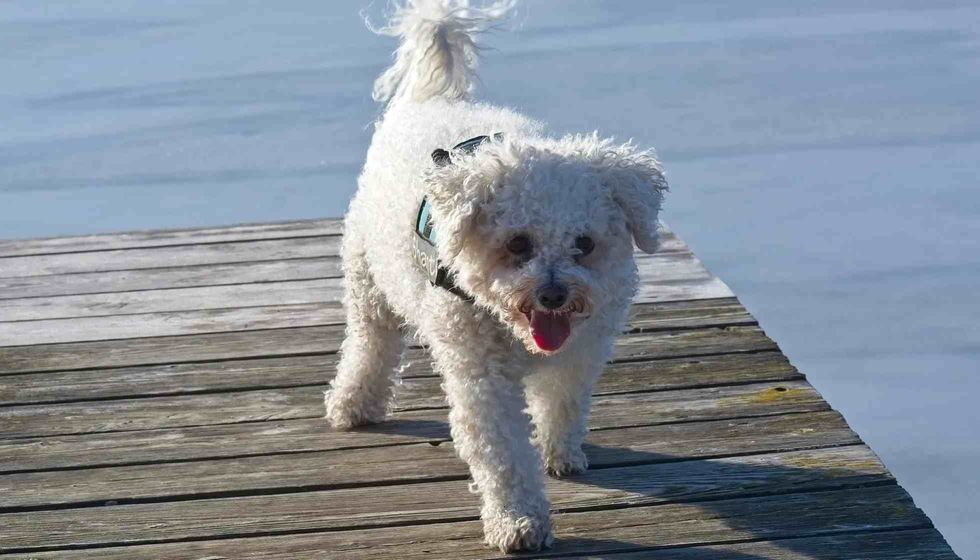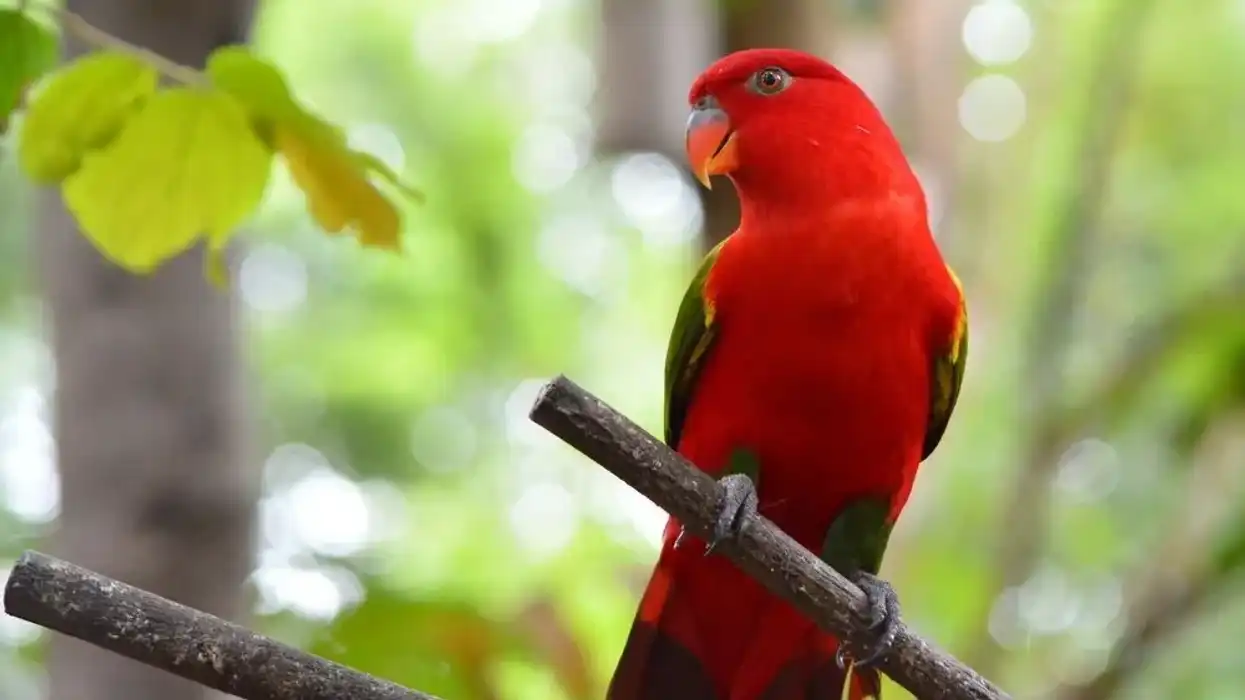A Bichon Frise (pronounced 'bee-shon-free-zay') is a cheerful, little dog breed with a love of mischief and plenty of affection to give. With deep black eyes and a cute white coat, the Bichon appearance is similar to that of a child’s toy!
There is so much Bichon Frise data and so many Bichon Frise facts to explore. The dog breed is originally Spanish, and they were first used as sailing dogs.
It is believed that Spanish sailors introduced this breed to the island of Tenerife within the Canary Islands and, originating from these islands within the Mediterranean, the breed could be a member of the Barbichon family.
Close cousins to the Bichon Frise are Maltese dogs, Havanese dogs, and also Bolognese dogs. Thanks to their royal looks, Bichon Frise dogs quickly found popularity among European nobility throughout history.
It's reported that King Henry III had a special basket created to hold his Bichons with him so that they could go everywhere he went.
On April 4, 1973, the breed was recognized as part of the non-sporting classification at American Kennel Club (AKC) dog shows. In 2001, a Bichon Frise named J.R. won Best-In-Show at a borough Kennel Club show!
This breed is one of those dog breeds that has a very high energy level. They're great companion dogs so they make fantastic pets, and whilst they may bark at intruders, they are not very aggressive. They're comparatively simple to train and they respond well to positive reinforcement.
Bichon Frise puppies are certainly a great pet to own! Also, if you're wondering, 'is the Bichon Frise hypoallergenic?' then the answer is a big yes!
Grooming these dogs is an important task. To keep up their shiny hair and their adorable appearance, daily brushing and regular baths are a requirement.
They require regular visits to a groomer for clipping or trimming (every four to six weeks), but they don't doesn't shed an excessive amount of fur. Grooming and trimming are required around the eyes and ears and beneath the eyes, so that the eyes themselves can be cleaned in order to keep tear stains at bay.
To keep up a healthy physiological state, good medical care is a must for any pet dog. regular vet checkups will help to extend the average Bichon Frise lifespan.
If you like reading these Bichon Frise dog facts, you can also check facts about the Petit Basset Griffon Vendéen or the toy poodle.
Bichon Frise Interesting Facts
What type of animal is a Bichon Frise?
The Bichon Frise is a cute, small dog breed.
What class of animal does a Bichon Frise belong to?
The Bichon Frise dog breed belongs to the class of mammals.
How many Bichon Frises are there in the world?
There is no known number, however, we do know that these are popular pets in many countries in the world.
Where does a Bichon Frise live?
Bichon Frise dogs usually live in houses as pets. They are great apartment dogs as they are easy to train, and the typical Bichon Frise temperament is easygoing.
What is a Bichon Frise's habitat?
Bichon Frise dogs don't have a natural habitat and today they live in our homes. Their origin can be traced back to Belgium, Spain, and France. They were used as sailing dogs and then were developed into lap dogs. Overall, they prefer moderate climates.
Who do Bichons Frises live with?
Bichon Frise dogs live with people, usually as pets. They are very energetic and playful.
How long does a Bichon Frise live?
The average Bichon Frise life span is around 12-15 years.
How do they reproduce?
Bichon Frise dogs are mammals so they reproduce by giving birth to live young. A Bichon Frise litter ranges from two to six puppies.
What is their conservation status?
Bichon Frise dogs are not an endangered species. They are listed as Least Concern.
Bichon Frise Fun Facts
What does a Bichon Frise look like?
Bichon Frise dogs are small dogs with big black eyes and a black nose, and white hair. Their white coat is thick and fluffy. Their height ranges from 9-12 in (23-30 cm), and their weight is around 7-16 lb (3-7 kg). They possess slightly rounded skulls with a flat muzzle.
How cute are they?
They are really cute and look a little like cotton balls! A teacup Bichon Frise dog, which is a smaller model of the beautiful white Bichon Frise, is particularly cute.
How do they communicate?
Bichons are really intelligent and they can communicate with gestures and movements. For example, if they want to go outside, they will sit near the gate, and if they want some petting, they might bump their head on your hands. Some aggressive dogs use barking as a way to communicate too.
How big is a Bichon Frise?
The normal Bichon Frise size ranges from 9-12 in (23-30 cm) in height. The breed's weight is around 7-16 lb (3-7 kg).
How fast can a Bichon Frise run?
With good health conditions, this dog breed can run at a speed of 16 mph (25 kph). This is not one of the fastest breeds, but a walk in the park can easily turn into a game of fetch as they are super energetic.
How much does a Bichon Frise weigh?
The average Bichon Frise weight is around 7-16 lb (3-7 kg).
What are their male and female names of the species?
There are no specific names for male and female Bichon Frises, they are all simply known as Bichon Frise dogs.
What would you call a baby Bichon Frise?
A baby Bichon Frise is called a Bichon Frise puppy, when they are young they look similar to a fluffy cotton ball or a child's soft toy!
What do they eat?
The diet of a Bichon Frise dog revolves around meat. Skin allergies are common in Bichons, so omega-3 rich fish, like wild salmon, can help improve and avoid these skin conditions. A quarter of their diet should comprise of fruits and vegetables.
Are they hypoallergenic?
Yes. The curly coat of this pet produces little dander, making it a great hypoallergenic dog breed for families looking for a pet dog.
Would they make a good pet?
Bichon Frise is known for being a very cheerful, happy, and affectionate dog, making it a great companion or family dog. It will bark at intruders occasionally, but it is a great dog for new owners. It is smart and will love to snuggle with you.
Did you know...
Some Bichon Frise information and facts might amuse you. For example, did you know that the English name for the breed is derived from the French term 'bichon à poil frisé' meaning 'curly-haired small dog'? The correct Bichon Frise pronunciation is 'bee-shon free-zay'.
Whilst the white Bichon Frise is the most common Bochon Frise, you can sometimes find a black Bichon Frise and a brown Bichon Frise too!
Characteristics and health issues
The temperament of this pet is often described as sporty, loving, feisty, cheerful, sensitive, and gentle; all mixed into one!
It's responsive, mild-tempered, and can also be very active, making it a relatively simple pet to take care of. A Bichon Frise likes to please and will impress its owners with their fast learning during training classes.
However, if left for long periods, it will suffer from separation anxiety so owners should take care not to leave a pet Bichon Frise alone for longer than eight hours (ideally less).
These pets are often vocal, thus, early training to curb frequent barking might also be required. While these dogs are great pets thanks to their size and temperament, they'll still want lots of playtimes and plenty of love and care, and, especially as a puppy, does not like to be left alone.
Consider this pet as your very own little shadow and keep them near to avoid separation anxiety!
Bichons do not drool and do not shed a lot of hair, which is another advantage to owning hypoallergenic breeds.
It is important that all dog breeders maintain a high-quality breed standard to avoid genetic diseases and other health issues. For Bichons specifically, breeders ought to offer health clearances from the Orthopedical Foundation for Animals (OFA) for health conditions such as hip dysplasia, elbow dysplasia, and Von Willebrand's disease, a condition that affects the blood's ability to effectively clot.
Getting your own Bichon Frise
The average Bichon Frise price is between $600-$1,700, with a common Bichon Frise cost being $920. Breeds like this have coats that need a diligent grooming schedule and this small pet desires a fond family who can offer them care and warmheartedness all day long. They can offer all their love and care reciprocally!
Grooming these dogs is not a simple task, and, as Bichons are white-colored, frequent bathing is needed to keep up their color. This breed tends to experience hair growth in its ear canals, that if not plucked frequently, will encourage the growth of wet bacteria and yeast, producing an unbalanced microbiome within the ear, which might cause ear infections.
This might cause excessive head shaking and can be treated by a vet.
Many dog breeds are also susceptible to health conditions like skin disease, ear issues, eye disease, knee issues, allergies, diabetes, bladder stones, heart conditions, cancer, and hip abnormality.
Any condition can be managed and treated with good veterinary care. The Bichon Frise dog breed is no exception, as all dog breeds require a lot of love, care, and training.
Here at Kidadl, we have carefully created lots of interesting family-friendly animal facts for everyone to discover! Learn more about some other mammals, including water buffalo, or musk ox.
You can even occupy yourself at home by drawing one on our Bichon Frise coloring pages.









